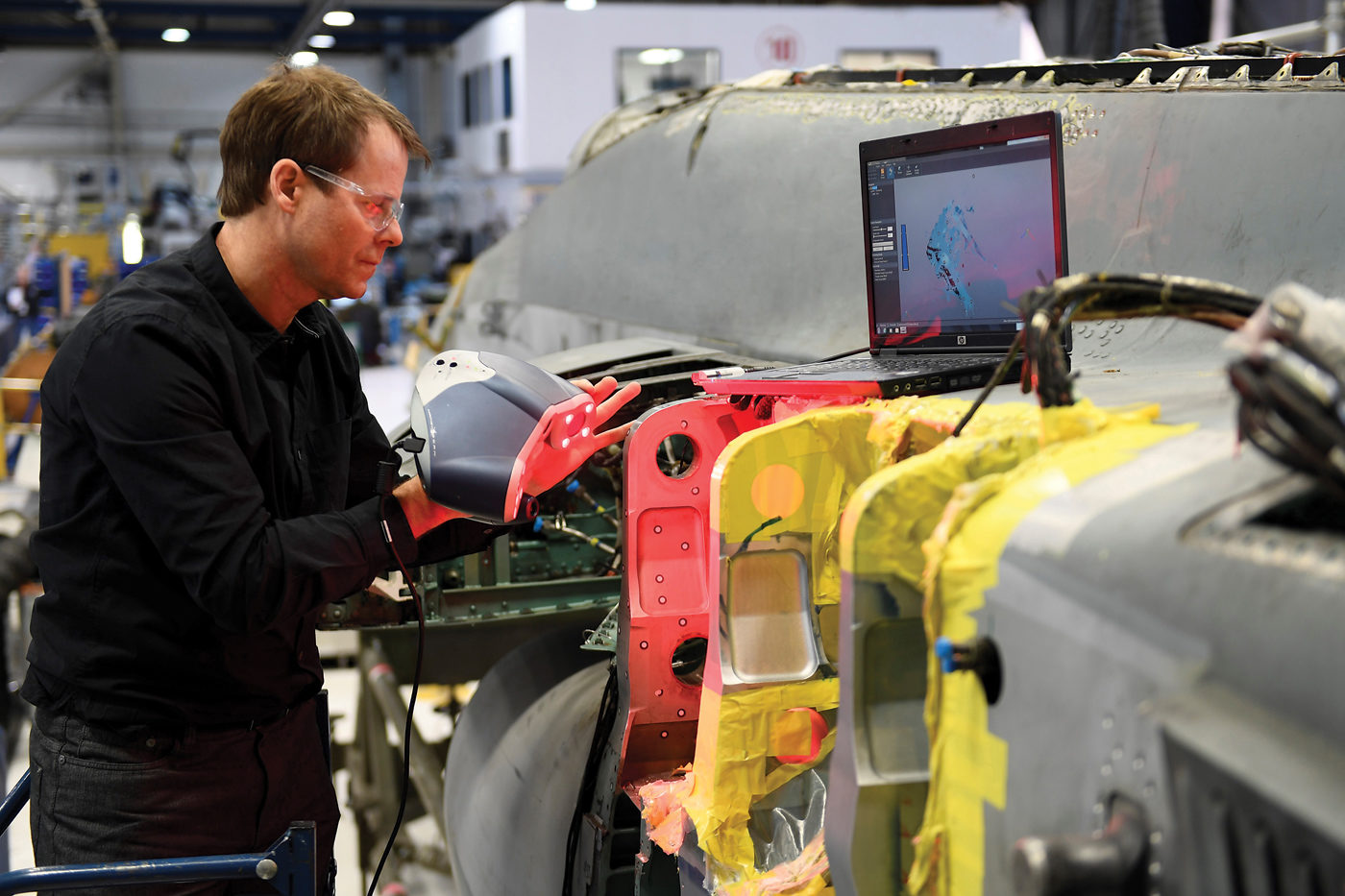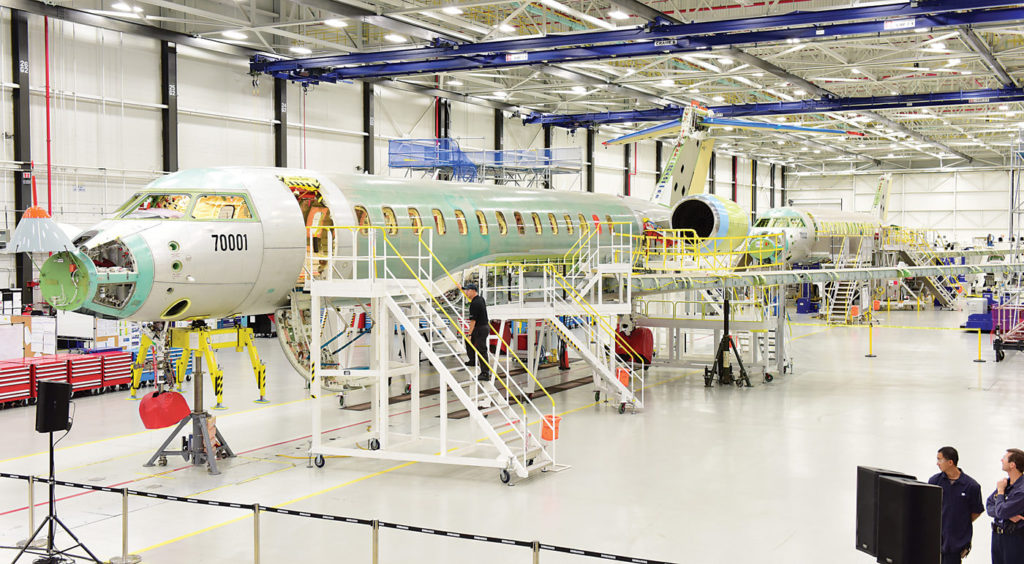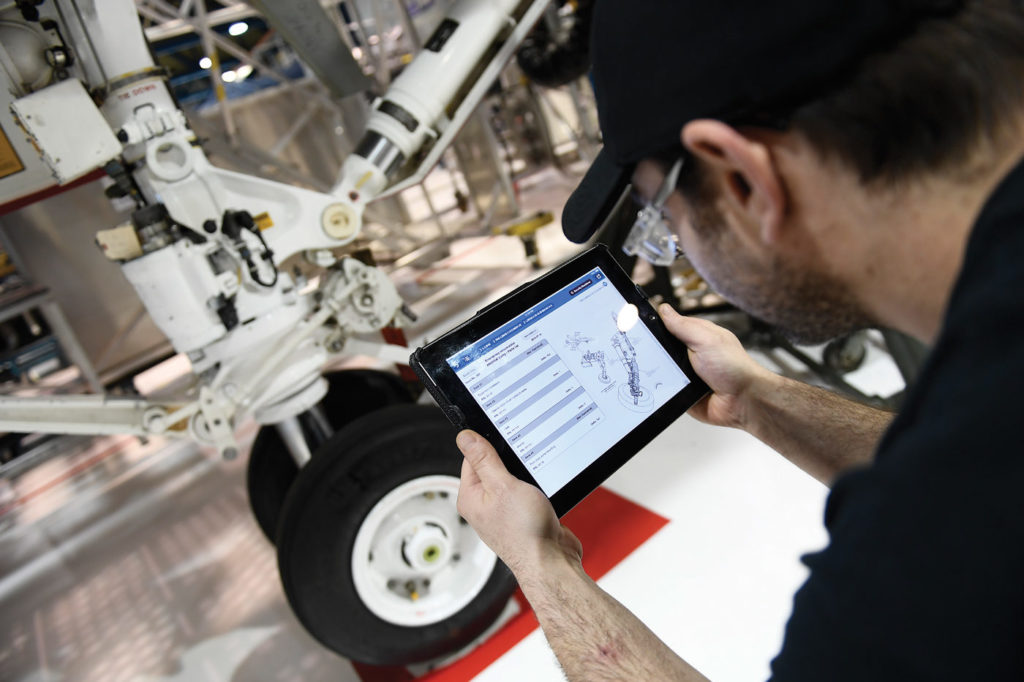Estimated reading time 7 minutes, 38 seconds.
Call it e-factory, smart factory, connected factory, intelligent manufacturing, or Industry 4.0: Whatever your preferred term, the digital transformation of the industrial workplace has the potential to disrupt the aerospace supply chain in ways few companies anticipate. And the implications for those who fail to grasp what digital means could be severe–ask Kodak.

“Top decision-makers are still underestimating the effects of digitization, especially the disruptive impact on their top line,” global aerospace consultancy Roland Berger wrote following a 2016 market survey of aerospace and defence executives. “Many are stuck with the belief that the impact will be mostly on bottom-line efficiency. Many companies just don’t have the right skills and personnel to think of new business models and conduct the right analyses to determine what to do in this fast-changing environment.”
Aerospace has long been regarded as a sector with high barriers to entry. Not long ago, few would have imagined a start-up with innovative software could do to the industry what Uber has done to taxi services or Airbnb has done to hotels–all without owning a single car or hotel property. But as SpaceX continues to shatter our perceptions of rocket science, many companies across the sector are rethinking what “going digital” truly means and are seeking better ways to capitalize on the wealth of data their manufacturing facilities generate.
Amazon has not closed all bookstores, Uber has not done away with cabs, and Airbnb has not replaced the hotel chain. But all three have forced traditional players to radically reshape their business models.
Aerospace won’t be easy to disrupt, but its model is “ripe for disruption,” Van Espahbodi, co-founder of Starburst Accelerator, a Los Angeles-based accelerator for sector start-ups, told the fourth annual Global Supply Chain Summit in Montreal on April 4. The barriers to entry have “significantly lowered” and non-traditional players from Silicon Valley and elsewhere are “seeking to capitalize” on aerospace technology. “Money from investors outside of this industry has significantly increased,” he observed.
The event, hosted by Aero Montreal as part of International Aerospace Week, was dubbed “Breaking Through the World of 4.0,” and captured much of the change that is affecting companies of all sizes, from original equipment manufacturers (OEMs), to Tier 1 systems integrators and large structures providers, small parts suppliers, and forging and casting shops.
All are awash with big data generated by their machines, processes and customers, and as more of their devices become connected and their processes digitized and integrated, much of that information can be analyzed and harnessed to improve decision-making and operations throughout an organization.

Industry 4.0 seeks to knit together big data, analytics, automation and robotics, artificial intelligence, cloud computing, cyber security, additive manufacturing, simulation and augmented reality in a corporate milieu in which humans and machines “collaborate digitally and communicate seamlessly through integrated processes,” said Hany Moustapha, a former executive with Pratt & Whitney Canada and now director of AEROETS, an engineering program for aerospace education and research. “4.0 is not only about the factory, it is the total enterprise.”
Jim Vounassis, Bombardier’s chief transformation and procurement officer, who has been leading a change agenda since 2015, pointed to a convergence of an increasingly competitive marketplace, diversity in the supply chain, and rising customer expectations with respect to digitization that have created enormous pressure to transform.
“One of the key success factors for us is to be able to understand the dynamics of our industry, and how to incorporate not only continuous improvement but also disruptive technologies like Industry 4.0,” he said.
Done well, digitization could break down the conventional silos of product development, manufacturing, sales and so forth that predominate most organizations, revealing a unified view of corporate data. It could also connect a manufacturer with its suppliers and customers, finding patterns in disparate data that might not otherwise surface.
“4.0 is based on collaboration,” explained Eric Leduc, senior sales manager for Microsoft. It “uses low cost technology to break barriers and silos between your manufacturing process, your suppliers, and your customers and really integrate them into the processes. . . [We’re] now able to digest a huge amount of data and make sense of [it].”
As with previous revolutions that have fundamentally transformed industry–the introduction of steam and mechanized processes, the dawn of electricity and mass production, and more recently the advent of computers and early automation–merely surviving the journey amid rapid change can be half the battle.
For many suppliers, the first step in a digital transformation is often a cultural one. For Tim Beatty, president of Bullen Ultrasonics, a hard materials and ceramic matrix composites machining shop of about 75 people, the hardest part was convincing employees–some of whom had been with the Ohio company for 30 years–that computers and robots would not mean massive layoffs, merely a repurposing of their talent and expertise.

Because of the costs, changes have been small and incremental, he said, and the data analysis is only just beginning. But the investment was one the company had to make. “We had to come to terms with that, realizing that we’re going to make this investment now or we’re not going to be in the conversation five years from now.”
Jill Christenson, a senior manager with Boeing, described the changes the airline manufacturer is making to capitalize on the technologies and capabilities within the small and medium organizations in its supply chain, what she called “focus factories.” One major challenge, however, has been ensuring small and medium-sized enterprises (SMEs) have the necessary infrastructure to be able to exchange data with Boeing, a mandatory requirement to doing business.
For small business owners used to keeping proprietary technology close to the vest, openly sharing data with a massive company makes them “nervous,” Beatty admitted, “[but] it felt like an inevitable choice for us.”
The promise of Industry 4.0, however, comes with words of caution for those who are not prepared to adapt.
“We are witnessing the deconstruction of the supply chain,” said Jeff Gazidis, aerospace industry manager for Siemens Canada, which is aiming to be a data broker for the sector, helping companies better access and understand both internal and relevant external data, and monetize and share their knowledge.

Kevin Michaels, managing director of AeroDynamic Advisory, a specialty consulting firm, sees the shift to vertical integration by both GE Aviation and Boeing as a sign of major change for the Tier 1 model.
“Tier 1s have significant price pressure from the OEMs, their business models are at risk, the rules are getting changed on them, and it is going to be a real challenging time for them over the next five to 10 years,” he said.
And for raw materials firms, “You had better be paying attention to additive manufacturing and what it could mean for your business,” he advised. “If you are a casting company, you are right in the bull’s-eye of where additive manufacturing is headed.”
Helping small and medium sized companies navigate Industry 4.0 has been a preoccupation for Aero Montreal, an aerospace sector think tank that includes over 180 SMEs.
Through a supplier development program called the MACH Initiative, it has been helping SMEs improve many of their strategic planning processes. Now it’s transitioning the program to help those same companies accelerate their efforts to bridge the digital divide.
MACH FAB 4.0, a five-year, $19-million joint initiative with the Quebec Ministry of Economy, Science and Innovation, will conduct the first digital audits of 50 companies beginning this spring.
![“[Industry] 4.0 is not only about the factory, it is the total enterprise,” said Hany Moustapha, director of engineering program AEROETS. Greig Reekie Photo](https://assets.skiesmag.com/wp-content/uploads/2017/05/original.jpg)
